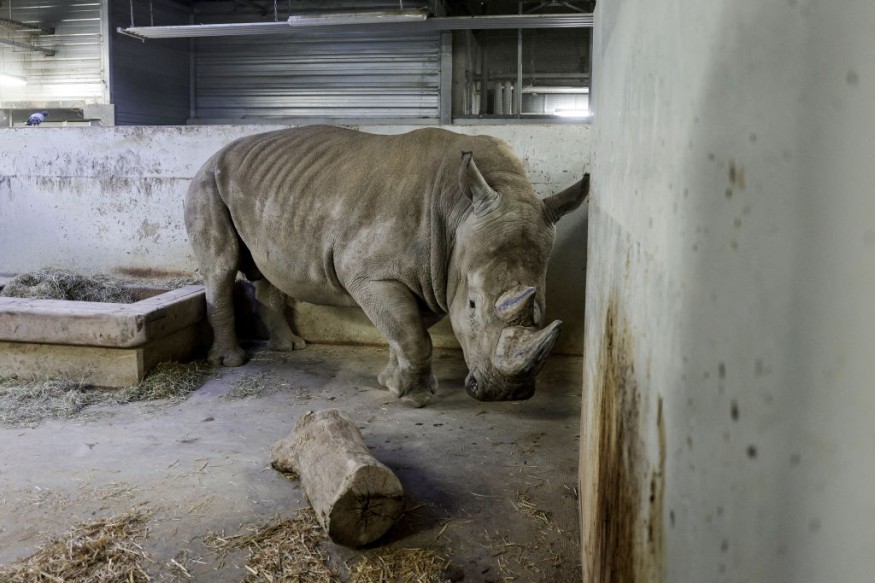Scientists in South Africa have developed a revolutionary way to protect rhinoceroses from poaching by injecting radioactive material into their horns. This is a ground-breaking attempt to counteract the ongoing issue of poaching.
The goal of this innovative research, called the Rhisotope Project, is to make the horns traceable at border crossings in order to thwart the illegal trade that has caused the rhino population to decline.
A Radioactive Solution to a Poaching Problem

Radiation and health physics section head Professor James Larkin of the University of the Witwatersrand is leading the Rhisotope research, which entails carefully injecting radioisotopes into the horns of living rhinos.
Radiation sensors, which were first put in place at border checkpoints worldwide with the intention of preventing nuclear terrorism, are able to identify these isotopes.
These isotopes make the horns easier to locate, which deters poachers and traffickers from taking them.
Sedated to ensure the animals feel no discomfort, the procedure is carried out at the northeastern Limpopo rhino orphanage in South Africa.
The amount of radioactive material is carefully measured to prevent negative impacts on the rhino's health or the environment.
What Are The Specific Radioisotopes Used?
The existing materials do not go into great depth on the particular radioisotopes employed in the Rhisotope research.
The project entails injecting measured amounts of radioisotopes-the precise kinds of isotopes are not disclosed in the public domain-into the horns of living rhinos.
This is probably for security concerns because revealing the precise isotopes would give poachers and unauthorized dealers knowledge on how to evade detection.
It is noted that the doses of radioisotopes are low enough to not affect the environment or the health of the animals, and that they are not fatal.
The main objective is for the horns to be detectable by radiation sensors at border posts. This will assist reduce poaching by making the horns traceable and less appealing to those involved in illegal commerce.
How Do The Radiation Sensors Work?
Smart devices that measure and identify ionizing radiation are called radiation sensors.
In order for them to function, radiation emissions must be captured and their energy transformed into an electrical signal.
In the case of a Geiger counter, for example, radiation ionizes the gas molecules within the Geiger-Müller tube, producing ions and electrons.
A series of charged particles are produced as a result of this ionization process, and these particles are amplified and recorded as a click or count.
The intensity of the radiation field can be directly correlated with the count rate.
The purpose of these sensors is to identify radioactive isotopes in rhino horns. They are positioned near border crossings in conservation initiatives such as the Rhisotope project.
These isotope-containing horns can indicate the possible movement of stolen items by setting off an alarm when they pass by the sensor.
This technique is essential to the conservation of wildlife because it makes the products of endangered species detectable and traceable at international borders, which helps monitor and suppress the illegal traffic in these species.
The Impact and Future of the Rhisotope Project
In reaction to the concerning rise in poaching instances, radioisotopes have been added to rhino horns.
The South African environment ministry announced that 499 rhinos were poached in 2023, an increase of 11% from the year before despite determined attempts to stop this unlawful activity.
More creative solutions are required because conventional techniques like dehorning and poisoning the horns have not worked.
A major step forward in the preservation of these magnificent animals is the Rhisotope initiative.
Through the use of technologies usually associated with national security, conservationists aim to prevent poaching and guarantee the rhino species' survival for future generations.
If this trial initiative is successful, it may be applied more widely, which might revolutionize global efforts to save species.
To sum up, the Rhisotope initiative is evidence of the creativity and commitment of people working to protect our natural heritage.
As the project develops, it provides a ray of hope for rhinos and serves as an inspiration for environmentalists around the globe in their fight against poaching.
© 2025 NatureWorldNews.com All rights reserved. Do not reproduce without permission.





